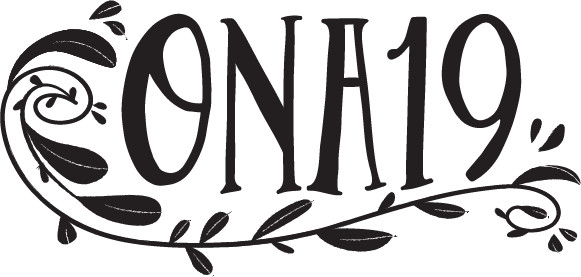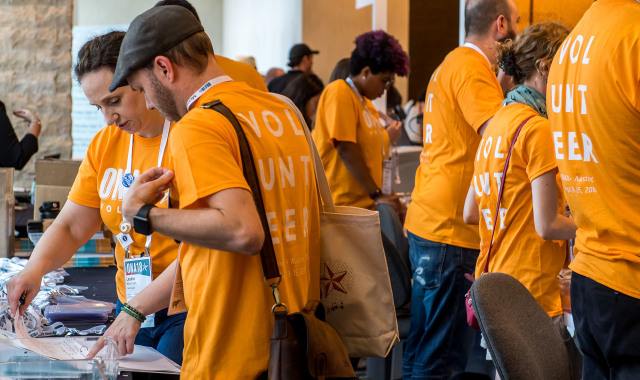This post was first published for Framework, where ONA team members share what’s happening behind the scenes as we design the ONA experience.
When I attended my first ONA conference, I knew right away I had found my people. As someone who had spent most of my career at the intersection of digital media and membership, I remember thinking, “Where has ONA been all my life?” Now that I’ve been with ONA three years, I’ve heard that same sentiment from countless other community members. And that’s no accident: ONA is designed to drive community building in every aspect of what we do, especially at our annual conference.
Yes, conferences are a great place to get training, but so are online learning platforms, webinars and universities. The great opportunity for in-person conferences is to connect people with like-minded peers, and here’s a secret: It doesn’t just magically happen. Community building takes strategy, time and investment.
If you want to make sure community building is baked into your event program, here are a few ways to get started.
Build a volunteer program. Plenty of people think of a volunteer program as event logistics support, and indeed, our 100+ volunteers do help run the show — working our registration booth, creating robust audio and visual resources from sessions and making sure every attendee feels welcome and knows where to go.
But ONA’s volunteer program is also an integral part of our community strategy. Our volunteer program helps us scale the instant sense of community as soon as attendees arrive. When attendees see their peers contributing to the conference at every level from registration onward, they know they’re part of something bigger than themselves. It sets a strong tone from the outset that this conference is a community affair.
The program also amplifies community building for the volunteers themselves. We hear from past volunteers the experience helped them make more connections, both on their volunteer teams and among attendees, and gave them a strong introduction to the spirit of ONA as a member-driven organization. They feel a sense of ownership over the conference, because they played a role in putting together a truly special experience. And they often say they were inspired to attend more conferences, to pitch a session idea or to volunteer with a local meetup group back home.
Special thanks to our ONA19 sponsors, including:
Program with intention for attendee connections. Facilitating connections is also baked into ONA’s programming strategy. One of our most popular programs is Table Talks, in which attendees spend a morning in small-group, deep-dive discussions tackling specific problems that benefit from many different perspectives and need lots of brainpower. More broadly, we encourage all speakers to build in interactivity, giving attendees a range of different ways to participate in sessions, and offer specialized participatory workshops. We also host a popular first-timers orientation to give newbies a chance to meet each other and hear tips from returning attendees on programming, networking and navigating the conference.
Schedule breaks. While we’re on the subject of programming, let’s talk about an equally important aspect of the schedule: breaks! I admit, I’ve been tempted by the productivity beast in planning events — if we are going to spend all this time getting so many brilliant people in one place, shouldn’t we have them doing something every minute?
But humans need breaks. We need breaks that give us enough time not only to take care of bio needs, but also to reflect on programming, have serendipitous hallway conversations, finish their notes from the last session and review the schedule and choose the next sessions. If you’re constantly rushing your attendees back to sessions, they’ll be so fatigued they won’t be able to make connections — and the connections are one of the top reasons people attend conferences.
At ONA’s conference, we typically have at least 30-minute to one-hour breaks between sessions, with more time over lunch. (Take a look at our rough schedule breakdown for details.) At smaller events where there’s less travel time between session rooms, a mix of 15- and 30-minute breaks can work. But in that case, I suggest giving people plenty of time over meals for unstructured networking or decompressing.
Empower members to organize interest-based meetups. There’s a long-standing tradition of an ONA running group organized by early-rising attendees who hit the pavement before sessions start. We’ve also had people organize crafting circles, pick-up basketball games, job-specific meetups such as for visual journalists or women entrepreneurs and get-togethers for affinity groups.
As the organizer, you don’t need to own every single meetup that happens at your event. Empower attendees to set them up and make it easy to do so. For example, compile a round-up of community-organized meetups for your website, or, if many of your attendees don’t already live in the host city, help them find good meeting venues. For our last conference, I compiled a list of potential meetup spots near our host hotel (using my own experience in the host city and a Yelp search of nearby places that were listed as “good for groups”) and shared suggestions with meetup organizers.
Help people make connections they can take back to their hometown after the event. One of the common questions we get from attendees is, “How can I meet people who live near me and keep the connection going when we get home?” We have a community-organized network of meetup groups around the world called ONA Local, where members can connect year-round rather than just seeing each other at the annual conferences. We encourage the group organizers to host geographic meetups at our annual conference to drive awareness about their groups, and 11 groups hosted meetups during ONA18.
We typically see a lot of interest among attendees in starting their own groups when they don’t already have one nearby around the time of the conference. To meet that interest, we host an information session at the conference for folks interested in starting a new group, and we open applications for new groups to join our network in coordination with the conference.
Reassess. ONA’s community strategy has shifted significantly over the years as our community itself has grown and changed. We reassess these strategies all the time based on survey feedback, participation and ideas from our community. In ONA’s early days, our conference attendees were a small enough group that each person did get an opportunity to meet almost every other. As we look forward to celebrating ONA’s 20th anniversary at ONA19 in New Orleans, we continue to hone and add new ways to create that same homecoming feeling for every attendee.

